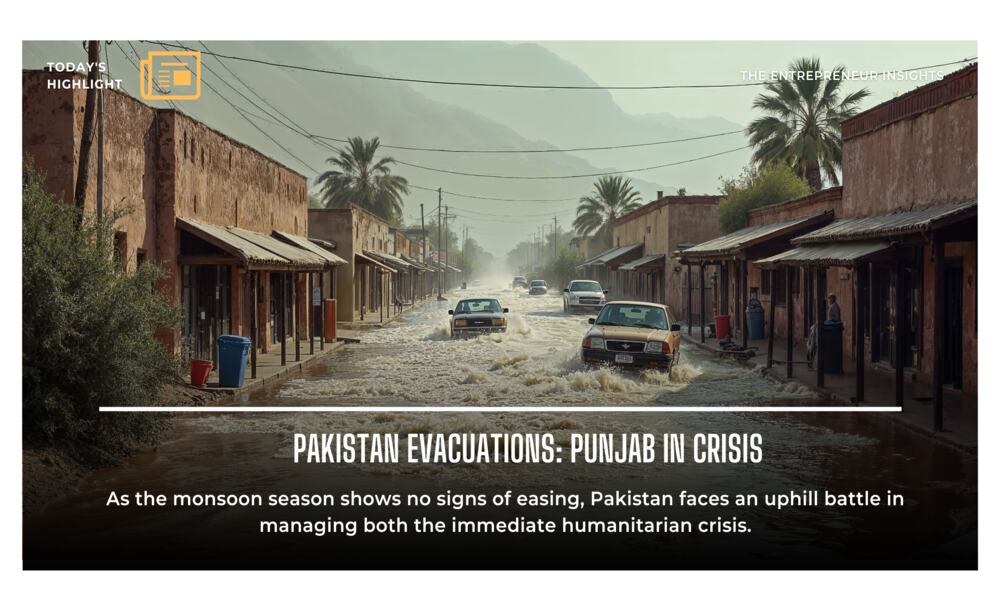Pakistan evacuations are underway as torrential monsoon rains continue to devastate several regions of the country, particularly Punjab. Entire communities are grappling with rising floodwaters that have submerged homes, swept away crops, and disrupted essential infrastructure. The scale of destruction has forced thousands to flee in search of safety.
Sialkot was one among the hardest affected places, with rainfall exceeding all recorded levels over the previous 49 years in a single day. The persistent precipitation has swamped residential districts as well as overburdened drainage systems, rendering roads and businesses impassable. For many households, the crisis occurred overnight, leaving little time to gather items before evacuation orders were issued.
Pakistan Evacuations: Punjab in Crisis
Authorities are scrambling to set up relief camps for displaced residents while coordinating large-scale evacuations across Punjab. Rescue teams have been deployed with boats and emergency supplies, yet the demand for assistance far outweighs the available resources. Many villagers remain stranded, waiting for rescue in areas where floodwaters have cut off all road access.
Scenes of devastation are sadly not new for Pakistan. Each monsoon season brings with it widespread destruction, but this year’s floods have proven exceptionally severe. Since June, heavy rains and flash floods have killed nearly 800 people nationwide. Casualties include children swept away by fast currents and farmers who lost their lives while trying to save their livestock.
The economic toll is expected to be staggering. Croplands, particularly in Punjab, have been inundated, raising fears of food shortages in the coming months. With agriculture being the backbone of the local economy, the destruction of farmland will affect not only farmers but also national food supply chains. Analysts warn that the situation could exacerbate inflation and worsen the already fragile economic conditions in the country.
Relief efforts have been further complicated by damaged infrastructure. Bridges have collapsed, roads have washed away, and communication lines in remote areas have been disrupted. Emergency workers are relying heavily on helicopters and boats to reach stranded families, but poor weather conditions continue to slow down rescue missions.
International relief organizations are also stepping forward, offering financial and logistical assistance. Humanitarian groups are encouraging the international community to act quickly, underlining that thousands of lives are still at risk. Relief coordinators have identified the most urgent requirements as clean drinking water, medicine, and temporary shelter.
As the rainy season continues, Pakistan confronts an impossible challenge in managing both the current humanitarian emergency and the long-term recovery project. Confusion falls hard on families forced to evacuate their homes. While evacuations may save lives, the struggle for life in improvised camps, as well as the rebuilding process, will be long and difficult.
Also read: Top 5 Mistakes After Knee Replacement and How to Avoid Them















Leave a comment